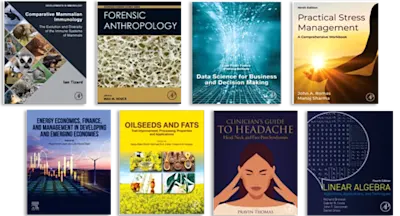
An End to Global Warming
- 1st Edition - September 2, 2002
- Author: L.O. Williams
- Language: English
- eBook ISBN:9 7 8 - 0 - 0 8 - 0 5 2 7 1 1 - 6
The 6+ billion inhabitants of earth aspire to higher standards of living. This takes energy. If fossil fuels continue to be the key source of energy their waste product, carbon… Read more

Purchase options

Institutional subscription on ScienceDirect
Request a sales quote
Optimistically, we could switch from fossil fuels to renewable energy sources (solar, wind, etc.). Regrettably these sources are difficult to harvest and unreliable. They cannot, alone, serve as a base load energy supply for humanity. Fission nuclear power yields extremely hazardous waste for which no fully agreeable disposal method has been developed.
Laurence Williams applied aerospace systems analysis techniques to seek a new energy system. An End to Global Warming presents his results. He shows why we must stop using fossil fuels and evaluates a host of alternatives to arrive at a robust energy system that will modernize world energy production and protect the environment. A by-product of this system will ameliorate problems associated with supplying potable water and in processing waste. The nations that develop the system described in An End to Global Warming will be gifted with huge financial reward and the pride in knowing that they have preserved the earth for all mankind.
What are fossil fuels.
Physical damage from extraction of fossil fuels.
Atmospheric damage caused by fossil fuels.
Smog.
Acid rain.
Carbon dioxide.
Fossil fuels - valuable chemical resources.
Plastics, fibers and paints are made from fossil fuels.
Lubricants are make from fossil fuels.
Printing inks and photogaphic film use fossil fuel compounds.
Cleaning compounds and drugs use fossil fuel chemicals.
Agriculture chemicals are derived from fossil fuels.
Our food is protected by fossil fuel derived plastics.
Fossil fuels - a source of international conflict.
The neglected pollutants.
Kyoto Treaty.
Summary.
Alternative Energy Sources.
Energy use.
Renewable energy sources.
Solar energy.
Solar thermal electric energy.
Solar voltaic energy.
Solar derived biomass energy.
Wind energy.
Geothermal energy.
Hydropower energy.
Ocean thermal energy conversion (Otec).
Tidal energy.
Wave energy.
Non-renewable sources with short service life.
Burner reactor nuclear energy.
Non-renewable sources with long service life.
Breeder reactor energy.
Fusion reactor energy.
Summary.
The Energy Source-Nuclear Fusion Reactors.
The fusion reaction.
Magnetic confinement reactors.
Linear magnetic confinement reactors.
Toroidal magnetic confinement reactor (Tokamak).
Other magnetic confinement techniques.
Inertial confinement reactors.
Fusion reactor safety.
Decommissioning fusion power plants.
Summary.
A Chemical Fuel is Required.
Chemical energy transport.
Electrical energy transport.
Storage of chemical energy.
Storage of electrical energy.
Hydrogen, the Optimum Fuel.
Potential chemical fuels.
Hydrogen fuel.
Hydrogen properties and challenges.
Properties of hydrogen.
A note about synthetic hydrocarbons.
Hydrogen safety.
Summary.
The Fusion-Hydrogen Energy System.
Energy generation.
Harvesting renewable energy sources.
Energy storage and distribution.
System conversion.
Evolution to the fuel cell.
Ancillary advantages of a fusion-hydrogen energy system.
The total recycling of carbon compounds.
Enhancement of agriculture.
Hydrogen system safety.
Summary.
Hydrogen as a Transportation Fuel.
The internal combustion automobile engine.
The hydrogen air fuel cell.
Hydrogen in aircraft.
Summary.
Oxygen-the Beneficial By-Product.
Oxygen for solid waste processing.
Oxygen sewage treatment.
Ozone in water treatment.
Cleaning of lakes and rivers.
Summary.
Implementation.
Why?
The world environment.
The world economy.
The cost.
The technical challenge.
The social/political hallenge.
What do the challengers say?
What action is vital to implement fusion-hydrogen?
Summary.
Synopsis.
Index.
- No. of pages: 232
- Language: English
- Edition: 1
- Published: September 2, 2002
- Imprint: Pergamon
- eBook ISBN: 9780080527116
LW
L.O. Williams
Employment History 2002 - Chemistry Tutor, Mount Union College, Alliance Ohio Technical Consultant (Energetic Materials) to Atlantic Research Corporation, Gainesville, Virginia and Lockheed Martin Corporation, Orlando, Florida
1999 January 1 Retired from Lockheed Martin, Orlando Florida
1996- 1998 Lockheed Martin, Orlando; Staff Scientist I was an internal consultation on energetic materials and principal investigator for Independent Research and Development tasks covering new missile warheads and methods of detecting and neutralizing chemical and biological agents.
1994- 1996 Lockheed Martin Ordnance Systems Co., Burlington VT; Chief Scientist I directed Research and Development to improve Ordnance items to include gun propellants, 120mm mortar ammunition, 40mm machine gun ammunition, and Reactive Armor to protect armored personnel carriers.
1982- 1994 Martin Marietta, Orlando; Manager, Research Ordnance Department I managed a 20 man staff performing independent research and development and contract research and development concerning Reactive Materials (classified) peak contract values booked approximately $40 million.
1979- 1981 The Aerospace Corporation, Washington D. C.; Program Manager I managed the hydrogen energy program at The Aerospace Corporation. Provided consulting services to the United States Department of Energy. Supported activities in Solar Energy collection, Ocean Thermal Gradients energy sources and the production and storage of hydrogen as a method of load matching in energy systems.
1970- 1979 Martin Marietta, Denver CO; Manager, Hazardous Materials Laboratory I managed a 10 person staff performing research, development and properties testing for propellant and explosives. I developed a method to purify hydrazine for the VIKING MARS LANDER mission. The pure hydrazine became a profitable product to fuel ca